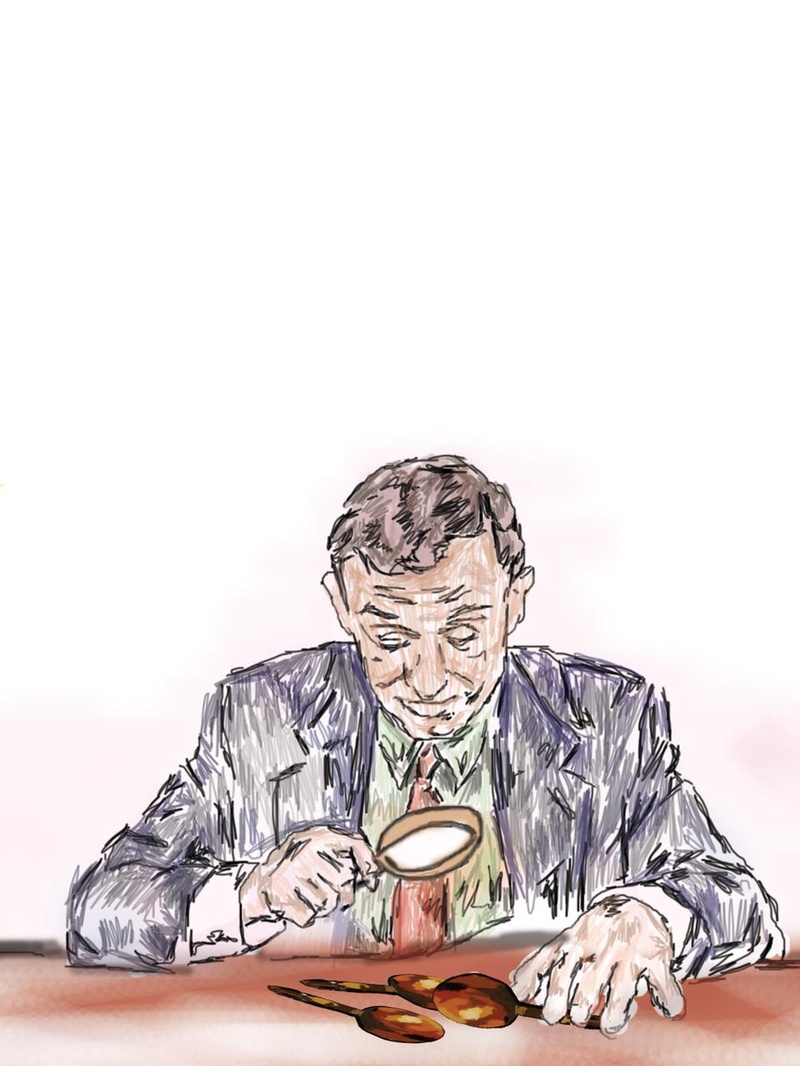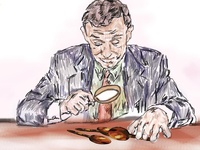I am in the basement of the Natural History Museum at Harvard surrounded by glass jars of eerie creatures, some of which died 150 years ago. There are encased shrimps to my right and left. “This label was written by Louis Agassiz around 1850,” says Adam Baldinger, curatorial associate and collection manager in the invertabrate zoology department at the museum. He takes me to his office and points to a shelf of specimens wrapped in cotton balls and submerged in vials of 70 percent alcohol. “You see that shelf up there? There’s about a dozen new species waiting to be identified.” The possibility of new species seems exciting, even if the creatures are pale, many-legged things that died quite some time ago. Yet for Baldinger, who cares for multiple collections at the museum and can discover up to a dozen unidentified species per year, it is just another part of his job.
On the surface, it may seem that museum curators just manage collections. Curators do oversee the finer points of their exhibits, such as arranging the space so that visitors do not trip over misplaced Indian headdresses, but their role encompasses much more. They must pick the pieces for the exhibit and organize them in a conceptually engaging way.
It is the curator’s job to maintain the immediacy of the work of art or preserved specimens; they must attract visitors even when photos of most artworks and historic objects are available as high definition images online. They bear immense knowledge of the past, but they are also able to present this knowledge in a way that conveys the passion that drew them to the field in the first place. Ultimately, curators’ appreciation for objects allows them to elucidate these artifacts for the public.
UNRAVELING THE FLAG
A curator, according to the Online Etymology Dictionary, originated as a word used to describe managers, overseers, and caretakers, usually of minors or lunatics. The definition of curator that we know today emerged in the 1660s when churches recognized the need for a position to maintain relics and other fragile and aging parts of cathedrals and monasteries. Today, curator is a word sometimes used too broadly to refer to any person who is involved in the behind-the-scenes workings of a museum. In reality, there are archivists, curatorial associates, special collections librarians, and exhibit designers who work to put together the layout and content of exhibits.
“We think through what is going to happen at a show, where people will passage, how to make sure people don’t trip over things, what to do with pedestals, what to do with lighting, and all those kind of superficial things about a show,” says Kathy Caraccio, who owns a small gallery in New York City. But curators are also responsible for collecting the works of art, sometimes flying to multiple countries to acquire works from other museums. Their tasks also include compiling catalogs, keeping track of the history of the pieces on display, and organizing their exhibits in a way that engages the public.
Archivists occupy the niche that most closely resembles the original definition of the word “curator.” They assess, collect, organize, and preserve objects of value. “Sometimes it’s things the alumni brought back from World War II, like an 18-foot Nazi flag, but also objects such as a brick that marked the grave of our first African-American graduate,” says Diane Shaw, the director of special collections and archivist at Lafayette College.
Universities can collect an amazing breadth of objects in their lifetimes; at an institution as old as Harvard, some collections are older than most universities. “What you see on exhibit here is less than one percent of our collection,” says I. Castle McLaughlin, associate curator of North American ethnography at Harvard’s Peabody Museum.
DINING ON CASSATT
The word “curator” is not a word that a child generally learns to speak before age ten. Therefore, it is tough to imagine a kid saying, “I want to be a curator when I grow up,” with the same sincere enthusiasm as a child might say, “I want to be a firefighter,” or, “I want to be a rock star.”
And indeed, curators arrive at their careers in a variety of ways. Caraccio is primarily a master printer, which means she receives etchings from professional artists and produces their prints by manually rolling a large metal wheel over paper, pressing ink into the indentations. Caraccio became a curator because she needed to display prints in an attractive, coherent manner for her customers. Now artists contact her from all over the world to ask if she will display their work at her gallery. Caraccio also teaches student interns at the National Academy School of Fine Art how to curate in her “hit-and-run tutorial program.”
Some curators start as history majors in college. Shaw became a curator and archivist by working at her alma mater, Emory University, in the Special Collections department. Then there’s Barbara Shapiro, who arrived in her line of work as a curator for the Boston Fine Arts Museum by offering to volunteer at the museum.
There are paintings and prints covering every wall of Shapiro’s apartment, many from artists she had worked with in the past. One wall is devoted to her alphabetized collection of art books and art catalogs. She also has an impressive collection of painted bowls and plates, some by the artist Mary Cassatt. Shapiro is able to recall without pause the story behind each object. One print was purchased at an auction; another was a gift from a friend. Judging from her devotion, it is hard to believe she was nearly barred from entering the field.
In the 1950s, Shapiro asked Harvard’s Fogg Museum if she could volunteer; she had a longtime love of prints and paintings. At the time, Shapiro, a mother of three, was turned away and was advised to stay at home with her children. Undeterred, Shapiro volunteered at the Museum of Fine Arts in Boston, took print-making classes at Radcliffe College and eventually got a masters degree in art history from Wellsley College. “By the time I went to Wellesley, Harvard was opening up for women, both married and single,” she says.
Shapiro’s story stands in marked contrast to how people—male and female—become curators today. Harvard is now a very welcoming place for curators to learn. Jennifer Quick is a Ph.D. student here and interns at the Fogg Museum, the same place Shapiro tried to volunteer 50 years ago. In fact, the Fogg Museum is primarily a teaching museum.
Read more in Arts
The Sway of the South














